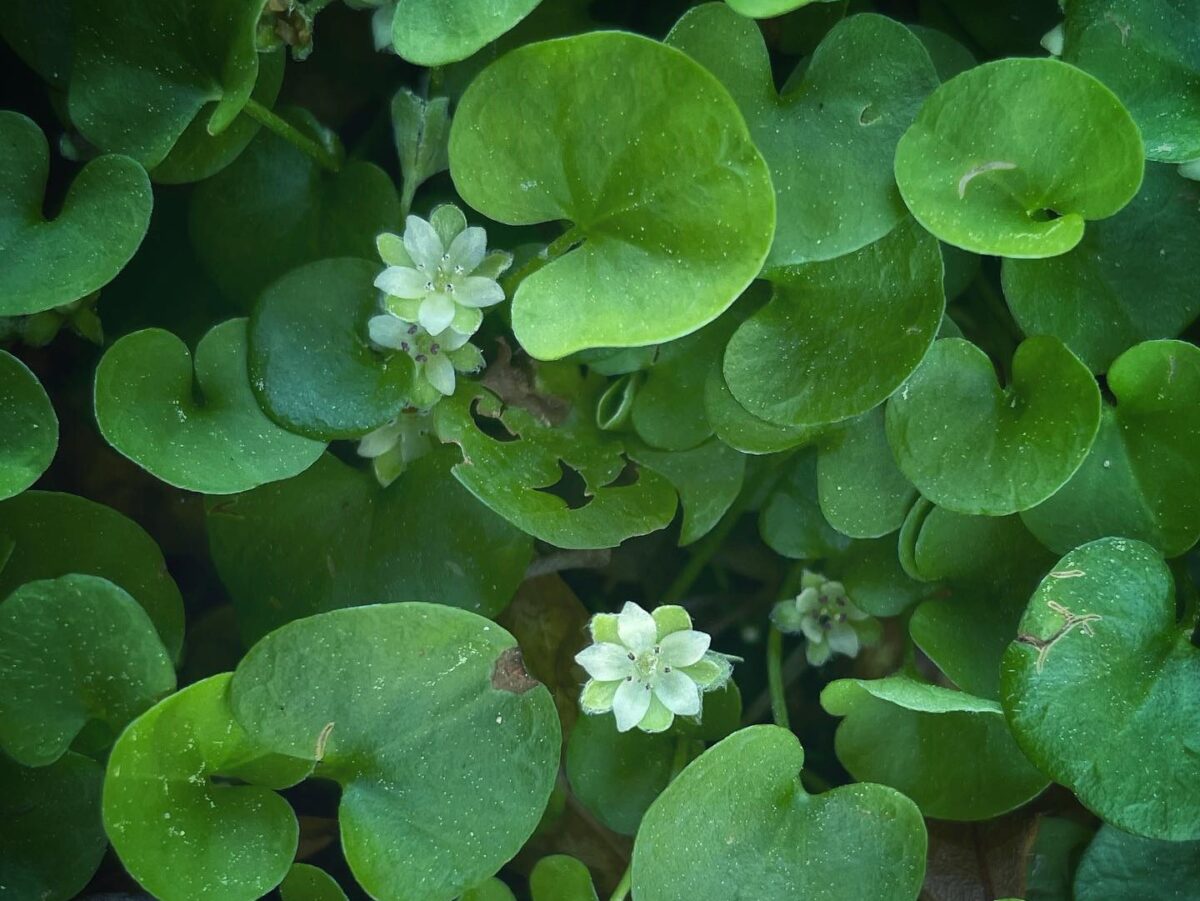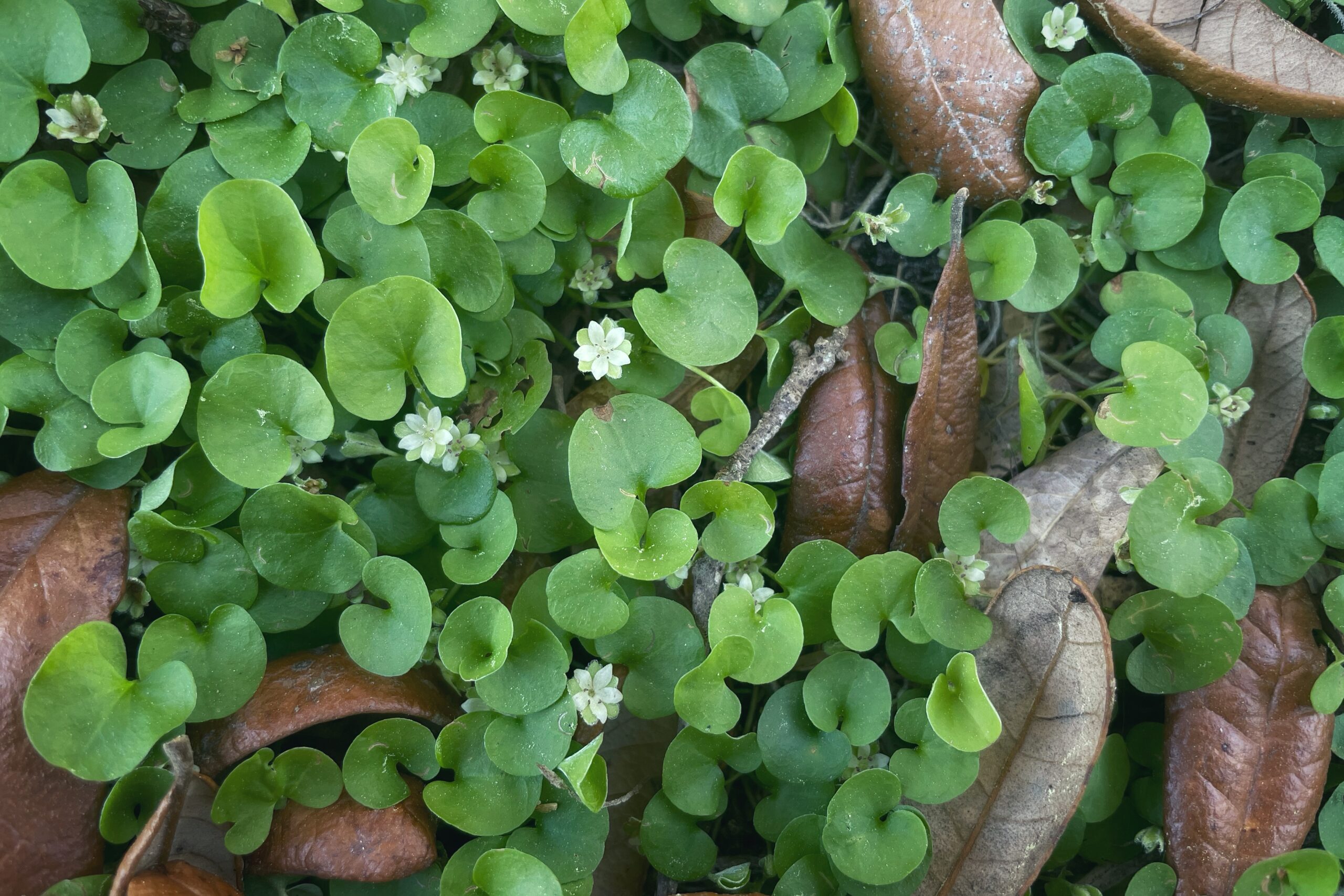Carolina ponysfoot
Pictured above: Carolina ponysfoot (Dichondra carolinensis) by Emily Bell. Click on terms for botanical definitions. View post as a PDF.
If you’ve got a regularly irrigated lawn or a landscape that naturally holds moisture, chances are Carolina ponysfoot (Dichondra carolinensis) occurs there. One could call it a weed, but we prefer to give a little more respect to this lovely little wildflower. Native from the south central through southeastern U.S., this species occurs throughout Florida in moist hammocks and floodplain forests. It is also frequently found in disturbed sites.
Carolina ponysfoot is a prostrate and spreading groundcover that roots via stem nodes. Its dime- to quarter-sized leaves are suborbicular to reniform and sparsely pubescent on the undersides. The diminutive flowers have five light green pilose sepals that alternate between the five white petals. Seeds are born in two-lobed capsules, each typically containing one seed.

Carolina ponysfoot is edible and can be eaten raw or cooked. It can also be dried for tea.
Family: Convolvulaceae (Morning glory family)
Native range: Throughout Florida
To see where natural populations of Carolina ponysfoot have been vouchered, visit florida.plantatlas.usf.edu
Hardiness: Zone 8A–11A
Lifespan: Perennial
Soil: Consistently moist sandy, limestone or organic soils
Exposure: Full sun to part shade
Growth habit: Low-growing (1-2 inches high) spreading herb
Propagation: Division of rooted stems
Garden tips: Carolina ponysfoot makes a great groundcover in natural gardens and mixes well with other low growing spreaders like Frogfruit (Phyla nodiflora).
Carolina ponysfoot is occasionally available from nurseries that specialize in Florida native plants. Visit www.PlantRealFlorida.org to find a nursery in your area.

